Talk with our local travel specialist who can help organize your trip.
Kanchenjunga Region Trekking - 5 Best Trek, Best Time and Permit
Far off, the Kanchenjunga region, in a distant corner of eastern Nepal, a wall of rock and ice rises eight and a half kilometers up into the sky. Mount Kanchenjunga, (8,586m) third highest mountain on Earth. The hike to either the northern or southern base camp of this formidable mountain is one of the most exciting – and remotest -treks in Nepal.
Over the course of two to three weeks, lucky walkers pass through pretty farming villages where the hillsides are striped in terraces, jungly sub-tropical river valleys, misty, old-growth coniferous forests where you wouldn’t be at all surprised if a goblin or two appeared on the path ahead, and then across Alpine tundra until you come face to face with the crashing glaciers and fluted peaks of the mighty Kanchenjunga massif.
But not just is this a scenically wild trekking region, but culturally it’s equally diverse. Walk in the Kanchenjunga region, and you will find yourself stopping at village houses or remote shepherd huts to drink tea with a heady mix of Limbu, Rais, Sherpa, and Gurung peoples.
For the moment, logistics, distance from Kathmandu, and the sheer, unrelenting up and down of the trekking routes in the Kanchenjunga region mean that very few people trek out here (although it is becoming more popular). Between October and November and March-April, very basic herders, teahouses, and village homestays are available most of the route. Outside those periods, though, most of them tend to close up, and you will need to be fully self-sufficient with camping gear and food.
Although most people come to Nepal’s most eastern corners only to trek to the Kanchenjunga Base camp, a couple of other even more rarely walked routes in the area. The Kanchenjunga trails are also the start or endpoint of the Nepalese part of the Great Himalayan Trail (a multi-month long route that pieces together many different trekking trails to create an epic trek that covers the length of the Himalaya from Bhutan to Pakistan).
Table of Content
Best Time To Trek In The Kanchenjunga Region
This part of eastern Nepal is the wettest part of the country, and trekking herein, or close to, the monsoon season is not advisable (unless you’re a botanist searching for the elusive Blue Poppy only flowers at this time). The best time to period to trek the Kanchenjunga region is between mid-October and late April. The main trekking routes here take you in and out of a lot of valleys, and it can be very hot in the lower parts of these valleys towards the start and end of the trekking seasons.
Conversely, it can be bitterly cold up high between December and February. Early November is a good time to trek here, as is late March and early April when huge numbers of rhododendrons burst into flowers (this is the best part of Nepal to see these flowers).
How Should I Trek In The Kanchenjunga Region?
Independent trekking is not allowed in the Kanchenjunga region. All treks in this area have to be organized through a recognized Nepalese tour operator.
Although it’s commonly said that the Kanchenjunga region is the domain of organized, camping the only trek, this isn’t completely true. Almost all villages along the two main routes to the base camps have very simple accommodation available (normally a room in a private house). Beyond the last villages, there are also a few basic teahouses with dorm-style rooms, but these close during the colder months. In all cases, accommodation is aimed more at porters and herders than trekkers. It would be silly to rely on finding a bed in a house or hut for the night so, for the moment at least, it’s very sensible to come on an organized camping trek. Bring porters from Kathmandu as there aren’t many available near trailheads.
Permits And Fee For Kanchenjunga Region Trek
You’ll need to have the following Permits for Kanchenjunga Trek:
- Restricted Area Permit permits cost US$20 per person for seven days
- Kanchenjunga Conservation fee is US$20 per person
(Permits are only issued to groups of at least two people.)
Must Read: Trekking Permits In Nepal
Is The Kanchenjunga Region A Dangerous Area To Trek?

Most trekking routes in Nepal are safe. However, the Kanchenjunga routes are a long way from pretty much anywhere, and if you encounter a problem, help might be a long time coming. Always ensure that your guide has a satellite telephone (a normal mobile phone is not adequate as there’s no signal in much of the region) and that your insurance covers high-altitude helicopter rescue.
- Both the north and south base camps are way above 4,000m, and altitude-related issues can be a problem. Fortunately, though the build-up to such lofty heights is quite slow, most people manage to acclimatize well enough.
- It’s possible to trek from the south to the north base camp (or vice-versa) via one of two passes. Both are high and very remote. The highest, Lapsang La (5,160m), can be treacherous. Ensure all of your team have suitable equipment, including warm clothing, good boots, crampons, ice axe, and ropes. If tackling one of these passes, ensure that your guide has high mountain experience.
- All the trekking trails in the Kanchenjunga region are long and demanding. This is not my first time trekking country.
How Do I Get To The TrailHeads?
The main trailhead for most treks in the Kanchenjunga region is the small town of Taplejung. There is an airstrip at Suketar, a couple of hours walk (or half-hour drive) above Taplejung. In the dry season (October to April) there are only occasional flights from Kathmandu to this airstrip, so don’t rely on flying here. Most people fly instead to the busy airport at Biratnagar in the southeastern lowlands. From here it’s a very long drive (allow at least 12 hours, or better still overnight in the pretty tea growing town of Ilam) to Taplejung. Tour companies can organize private jeeps. You could also travel all the way from Kathmandu overland by bus or private vehicle. Either option is an exhausting multiday drive.
Featured Trips
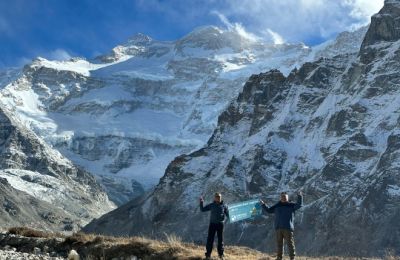
Kanchenjunga North Base Camp Trek - 15 days
Kanchenjunga North Base Camp trek is a short trek route that leads to the popular north base camp of Mt. Kanchenjunga and lies at a higher altitude than the south base camp
Inquire NowWhere to travel next?
Get help from our travel specialists for holiday ideas that matches your interests.
6 Best Things About Kanchenjunga Region
1. Off the Beaten Track
Kanchenjunga might be the third highest mountain on our planet, but few people outside mountaineering circles seem to have heard of it. As a trekking destination, it receives a tiny fraction of the number of visitors who pace the Everest and Annapurna trails, and it’s this quiet that is perhaps the biggest draw of the Kanchenjunga area. After all, where else can you commune in peace with one of the world’s highest mountains without another soul around?
2. Mountain vistas

Whether you choose to head to Kanchenjunga North or South base camp, when you tilt your head back to stare up in awe at the sheer rock and ice wall rising thousands of meters above you, one thing is for certain. This is one of the best mountain vistas in the entire Himalayas.
3. Pristine Forests and Blue Poppies
The Kanchenjunga region is a botanist's dream. In spring, slopes are ablaze in the purples of budding rhododendrons, and at any time of year, the steamy, low valley floors are a tangled web of tropical rain forest plants. And, if that weren’t enough, this is one of the few places in Nepal where you might find the elusive Himalayan blue poppy-a flower as rare as a yeti. And talking of yetis, if you’re going to find one anywhere in Nepal, then surely it will be in the mist-soaked, mysterious, and utterly beautiful, old-growth forests found beyond the last villages. They’re some of the most pristine forests in the Himalayas.
4. Local Life
The lower slopes of eastern Nepal’s mountains are densely populated. The slopes are a tapestry of terraced fields, and the villages are made up of twee wooden houses painted in blues and whites with walls and timber balconies covered in maize drying in the sun. With tourists, so few and far between, the people of this area will welcome you into their houses and teashops and sit you down to talk story.
5. Wildlife
With this trek covering such a diverse range of habitats, climates, and altitudes, there’s plenty of wildlife to be seen – or at least clues of their passing to look for. The forests are filled with pheasants, the scree slopes clatter with the hooves of blue sheep, and the occasional snow leopard slips like a shadow over the high passes. And lower down, where the air is hot and humid, the forest sings to the sound of insects, colorful birds, and crashing langur monkeys.
6. Exploration possibilities
Any trek in the Kanchenjunga region is something of an adventure, but for something really challenging, try the epic high altitude, three to the four-week-long trail that links both north and south base camps via the Mirgin La (4663m), or the even wilder Lapsang La (5,160m).
You’ll need to be well equipped and totally self-sufficient. Not enough of a rush? A few groups have launched expedition-style treks in recent years that link Kanchenjunga North with Makalu via the 5160m Sumba Lumba pass. It takes four weeks and a lot of determination.
Featured Trips

Kanchenjunga North Base Camp Trek - 15 days
Kanchenjunga North Base Camp trek is a short trek route that leads to the popular north base camp of Mt. Kanchenjunga and lies at a higher altitude than the south base camp
Inquire NowWhere to travel next?
Get help from our travel specialists for holiday ideas that matches your interests.
Best 5 Treks In Kanchenjunga Region
1. Kanchenjunga Trek (Kanchenjunga Circuit Trek)

It’s possible to make a round trip circuit that takes in both north and south Kanchenjunga base camps. This means you won’t have to retrace your steps at all, and you’ll have around five days in the high mountains sleeping well above 4,000m. Kanchenjunga Trek involves crossing either the Mirgin La (4,663m) or the Lapsang La (5,160m). Neither route should be taken lightly, with snow common late into the trekking seasons.
- Difficulty: Very hard. Lots of steep up and down and several nights camping at a high altitude far from any facilities.
- Trek Duration: 24 days.
- Max. Elevation: 5,140m or 5,160m
- Accommodation: Camping or very basic homestays and teahouses.
- Start/End Point: Taplejung
2. Kanchenjunga North Base camp Trek
There are two main Kanchenjunga treks, and the three-week trek to the Kanchenjunga North base camp is the longest, hardest, and by far the most outrageously spectacular. The trail drops down into forested valleys and climbs again and again over ever higher and steeper hills and mountains. In the earlier stages, it’s a rural village to village affair with lots of cultural interaction, but eventually, the path clears the last village, crosses above the tree line, and wends its way across Alpine pastures to the base camp at Pang Pema (5,140m) which is set among fields of scree and giant, slow-moving crunching glaciers which rise up to the soaring north face of the mighty Mt. Kanchenjunga.
From the base camp, an exhilarating day walk can be made up to the summit of Drohmo Ri (5,915m). The views are as good as you’ll get without venturing firmly into the realms of mountaineering but be warned that the risk of altitude sickness on this day trip is high.
The one drawback with the Kanchenjunga North trail is that once you’ve made it to base camp, there’s nothing more to do but spin around and return the way you came.
- Difficulty: Hard. Lots of steep up and down.
- Trek Duration: 17-20 days.
- Max. Elevation: 5,140m or 5,915m
- Accommodation: Camping or very basic homestays and teahouses.
- Start/End Point: Basantpur or Taplejung
3. Kanchenjunga South Base Camp Trek
The shorter and slightly lower of the two Kanchenjunga trails takes you straight to the mountain's belly and the south base camp at Oktang and the Yalung glacier. In many ways, this is a similar walk to the one to the northern base camp with lots of diverse scenery, interesting villages, and ever-changing vegetation. Although you don’t go as high on this walk (max altitude is 4,800m), there is a huge amount of very steep up and down, which makes for an exhausting walk. This route gives you a day or so less in the high mountains than the northern route, but the scenery of giant peaks reflected in frozen glacial lakes and shimmering glaciers all around is utterly mesmerizing. As with the northern route, once you get to the base camp, most people turn around and retrace the same route back down again.
- Difficulty: Hard. Lots of steep up and down.
- Trek Duration: 14 days.
- Max. Elevation: 4,800m
- Accommodation: Camping or very basic homestays and teahouses.
- Start/End Point: Taplejung
4. Limbu Cultural Trail
The newly created Limbu Cultural Trek is a good bet for those with both limited time and who don’t want to venture up into the rarefied air of the high mountains. Making a swoop through glorious farming country and tumbling valley walls of the eastern foothills, this trek is more about people – and the Limbu people in particular – than about high mountains (though you do get some stunning mountain views as well). The walk's highlight is the opportunity to stay in village houses in a local homestay program and get an insight into village life.
- Difficulty: Moderate
- Trek Duration: 5 days.
- Max. Elevation: 3,790m
- Accommodation: Camping or very basic homestays and teahouses.
- Start/End Point: Taplejung/Mamankhe
5. Kanchenjunga North to Makalu Trek
In recent years a few daring groups have launched expedition-style treks that link Kanchenjunga North base camp with Makalu via the 5160m Sumba Lumba pass, almost always coated in a thick layer of snow and have a high Arctic look to it. It takes four weeks (including walking to Kanchenjunga North base camp from Taplejung and then back down the Makalu trails) and a lot of determination, but for those with the stamina and experience, there are few other trails in Nepal as rewarding as this one. Anyone contemplating this route should engage in full expedition planning and have experience at high altitude as well as basic mountaineering skills.
- Difficulty: Very strenuous. Borderline mountaineering.
- Trek Duration: 28 days.
- Max. Elevation: 5,160m
- Accommodation: Camping only when crossing the pass. Very basic homestays and teahouses in lower villages.
- Start/End Point: Taplejung/Num
Ready to get trekking in Nepal? Discover our hand-crafted guided trips trekking in Nepal.
- Written by: Stuart Butler
Updated: Feb, 2, 2021

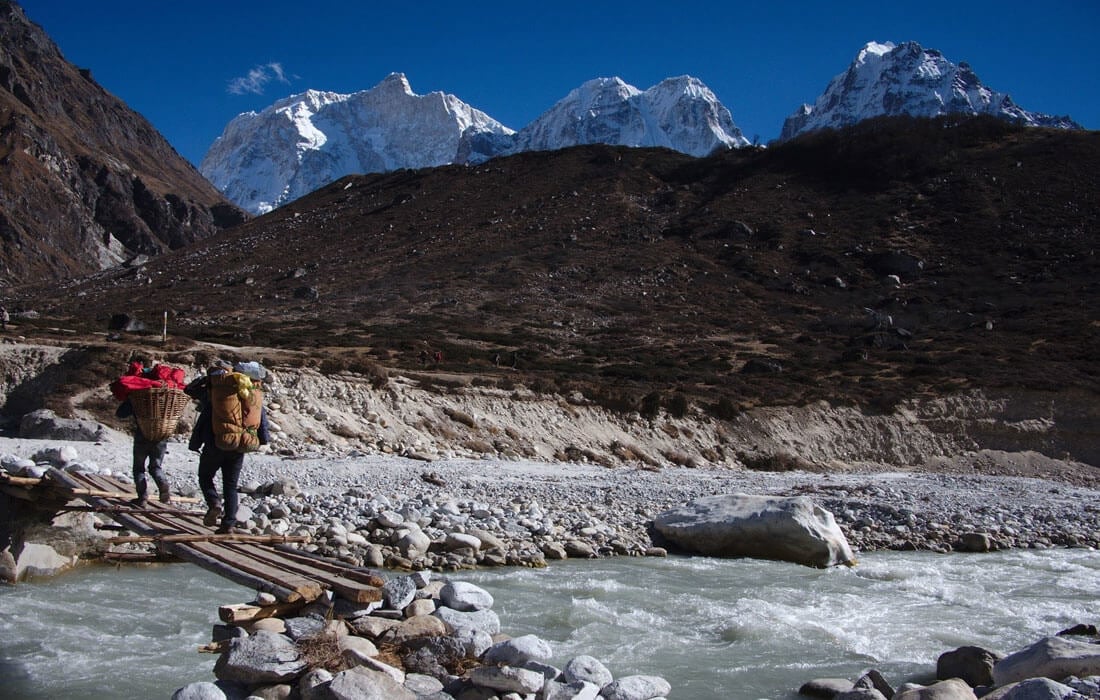

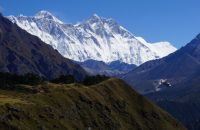
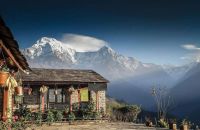
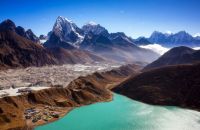
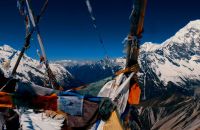
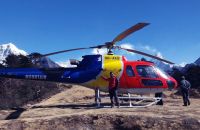
















Recent Comments